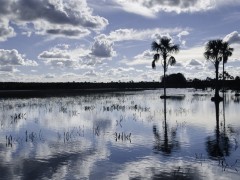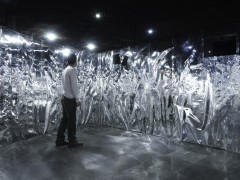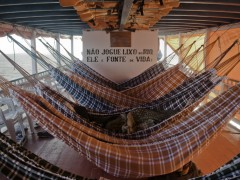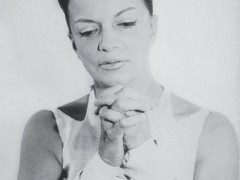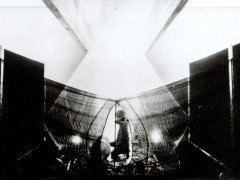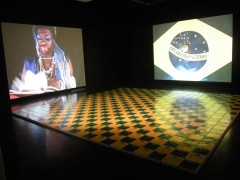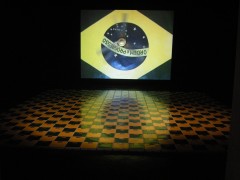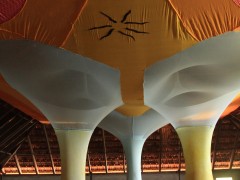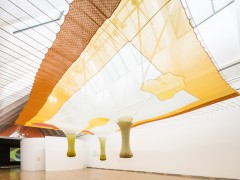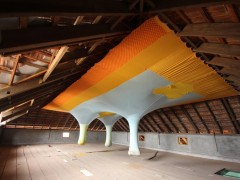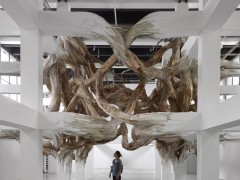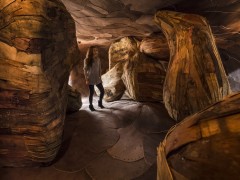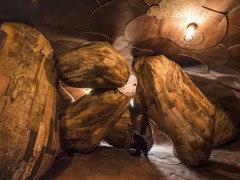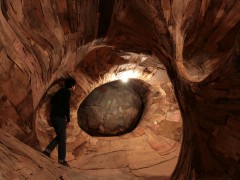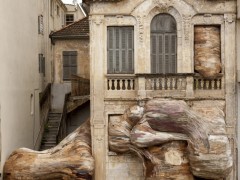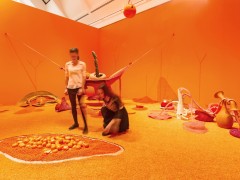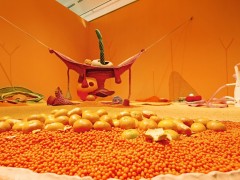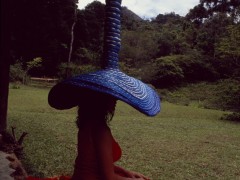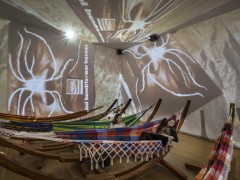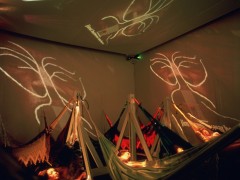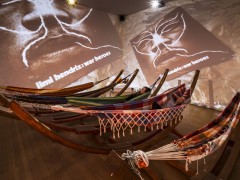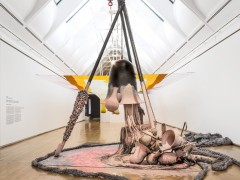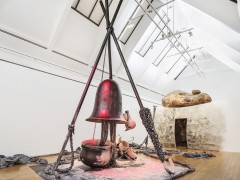Brasiliana. Installations from 1960 to the Present
02.10/2013-05.01/2014
Schirn Kunsthalle Frankfurt
On the occasion of Brazil being guest of honor at this year’s Frankfurt Book Fair, the Schirn Kunsthalle Frankfurt is presenting a large exhibition on the installation in Brazil. Eight large-scale works will transform the Schirn from 2 October 2013 to 5 January 2014 into a series of spaces that can be experienced intensely by the senses and installations into which viewers are directly integrated as participants. With examples of installations from the late 1960s to the latest artistic positions, the exhibition demonstrates the specifically Brazilian aspect of this “art of experience.” The exhibition combines positions now considered classical, like those of Hélio Oiticica and Neville D’Almeida, Lygia Clark, Tunga, and Cildo Meireles, with works by younger artists such as Ernesto Neto, Maria Nepomuceno, Henrique Oliviera, and Dias & Riedweg, and thus continues the history of the installation in Brazil through to the present.
The medium of the installation is manifested more clearly than elsewhere in the young country of Brazil, which is characterized more by the modern and contemporary than tradition-laden Europe is. The origins of the installation in Brazil reach back to the 1960s and were influenced by an occupation with the theories and modernist currents of the Western art scene. It led to an originally Brazilian art, which thrives on the interplay of different cultures and is characteristic, powerful, and expressive, focusing on the sensory and even physical penetration of the works of art. Avant-garde artists such as Lygia Clark and Hélio Oiticica recognized early on the potential that lay in breaking free of conventional artistic genres and methods. They parted ways with the two-dimensional painting and designed a dynamic art that is closely tied to life, makes diverse local references, and draws the viewer into the center of artistic production: Art became an expanded aesthetic and sensory experience. This approach is reflected in a variety of aspects in subsequent generations of artists. For example, the artists Cildo Meireles, Tunga, Ernesto Neto, Maria Nepomuceno, Henrique Oliviera, and Dias & Riedweg regard the connection between art and life as just as elemental as concentrating on the viewer, whose senses are addressed in different ways. It is striking that particular attention is paid to the body as a whole: Seeing a work of art as a primarily visual form of reception recedes in favor of other senses such as smelling and hearing. The artists produce extensive, space-filling spaces that completely involve the viewers, surrounding them, occupying them, assimilating them, and challenging them physically, tactilely, and visually.
Artists: Lygia Clark, Dias & Riedweg, Cildo Meireles, Maria Nepomuceno, Ernesto Neto, Hélio Oiticica/Neville D’Almeida, Henrique Oliveira, Tunga
Practical informations
Römerberg, D-60311 Frankfurt
Tuesday–Sunday 10am–7pm,
Wednesday–Thursday 10am–10pm


 Home
Home
